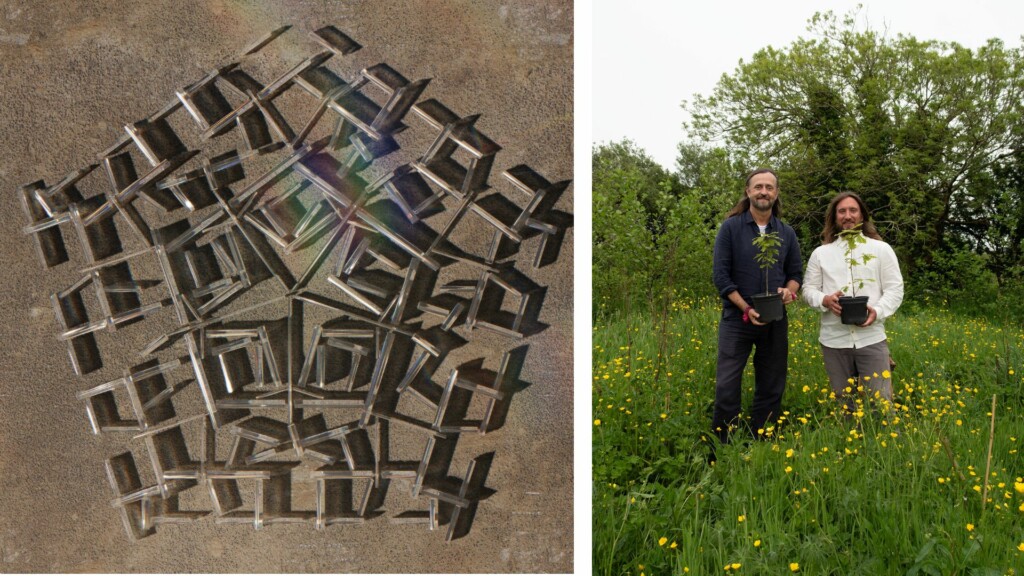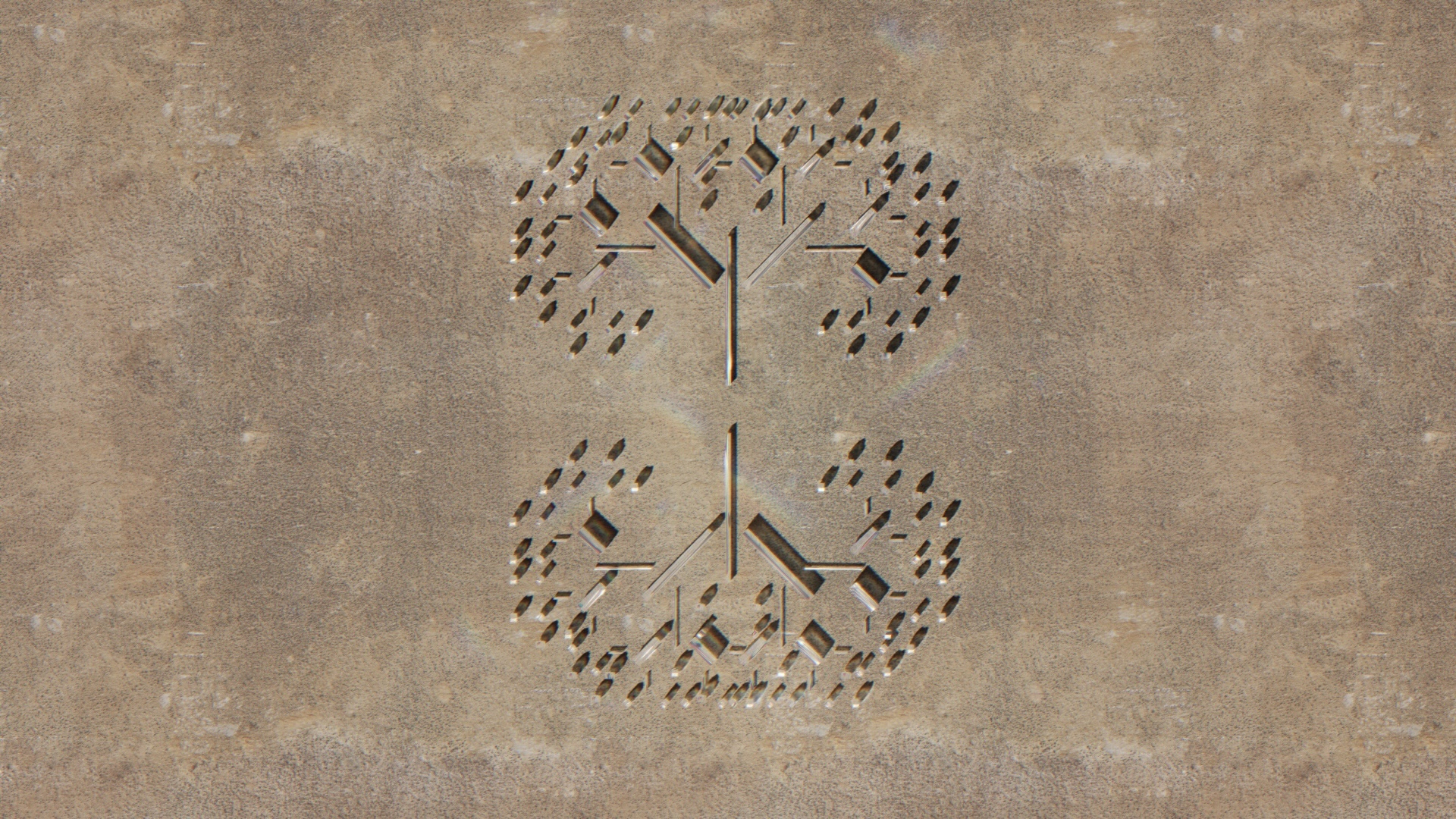Irish artist John Gerrard has debuted Crystalline Work (Arctic), a year-long digital artwork from which proceeds are donated to Hometree, a reforestation project in Ireland. Premiering on the online art platform Feral File, the artwork utilises the Ethereum blockchain which has significantly reduced rates of energy consumption since its protocol transition in 2022.
Artist John Gerrard has long explored environmental themes in his digitally-focused artistic practice. Creating vivid virtual worlds, he mixes natural elements with simulation, even programming his pieces to follow the cycles of seasons and of night and day such as in Western Flag (Spindletop, Texas), 2017 or COP26-debuted Flare (Oceania), 2021*. Gerrard’s new artwork Crystalline Work (Arctic) uses digital techniques to portray crystal structures of Arctic ice in a stark landscape. In the piece, a virtual North Pole features a robotic system that creates an intricate, crystalline structure on an arid landscape 24 times per solar day. Over the course of the year, this temporal work will see the robot creating 8,760 pieces that respond to the changing seasons, with each work a unique ‘archetype’ with varying patterns of solar crosses, stars, trees, snowflakes and mycelium.
Crystalline Work (Arctic) is presented as a “regenerative work for the environment” as it supports reforestation efforts – 25% of the sales revenue from the artwork are donated to Hometree, a charity dedicated to restoring a 4,000-acre temperate rainforest in Gerrard’s native Ireland. Each day of the robot’s year-long performance will result in the planting of 33 trees, culminating in a total of 12,045 trees by the end of the year, illustrating how artworks can also be used as platforms to support real-world conservation. The artwork premiered on 20th June 2024 as a solo exhibition on Feral File, a leading online digital art platform, and uses the Ethereum blockchain to “tokenize” the artwork, that is, the encoding of ownership rights digitally. It is well documented that the use of certain blockchains have had a significant negative impact on the environment, namely through the amount of energy needed to power the thousands of NFT tokenization transactions per day. Additionally, the use of Artificial Intelligence (AI) to create images generates large amounts of CO2 through its energy-intensive processes. Gerrard emphasises the potential for greater ecological responsibility through the choices made by digital artists, particularly when deciding which blockchain to use.
For the tokenization of Crystalline Work (Arctic), Gerrard chose the Ethereum blockchain, which in 2022 transitioned to “proof-of-stake” protocols that reduce the database’s total energy consumption by around 99.95%. At the time of publishing, Ethereum was estimated to have needed 664.21 kW of power, roughly the equivalent needed to run one diesel power generator, whilst in comparison, Bitcoin needed the equivalent of approximately 23,500 diesel power generators running simultaneously. By using Ethereum, the energy required when buyers mint Crystalline Work (Arctic) is reduced almost to zero, equivalent to the energy needed to send a post on X.

John Gerrard, Crystalline Work (Arctic), 2024, simulation (left), and Gerrard with Hometree reforestation charity, Connemara, Ireland, 2024 (right). Courtesy of the artist.
Another innovative artistic and digital project for financing forest conservation, in this case the Ecuadorian rainforest, is currently on display. Calls for Action (2024) by artist Julian Charrière, inaugurated at Art Basel, is installed on a giant screen in the heart of Basel, as well as in the I Feel the Earth Whisper exhibition at the Museum Frieder Burda (see here). 100% of the proceeds from the sale of a limited edition print with the Fondation Beyeler are donated to the conservation project, with the artist also making a substantial personal donation. This initiative, like John Gerrard’s Crystalline Work (Arctic), illustrates a growing trend in the contemporary art world towards direct action through the integration of technology to support conservation and environmental projects.
* Exhibited by Art of Change 21
Learn more about Julian Charrière
Feral File, ‘Crystalline Work (Arctic), John Gerrard’, 2024 <https://feralfile.com/exhibitions/crystalline-work-5ze>
Julian Charrière, ‘Calls for Action, Live Feed’, 2024 <https://callsforaction.net/>
Author: Eliza Morris
Translated into French by Sana Tekaïa
Cover: © John Gerrard, Crystalline Work (Arctic), 2024, simulation
Impact Art News, June-July 2024 #49
Subscribe to Impact Art News (free)

